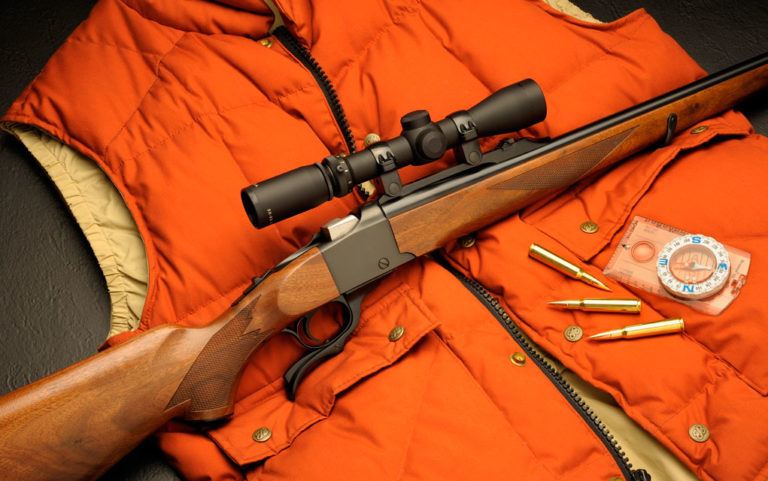
The Ruger No. 1 rifle is a classic single-shot that has stood the test of time and continues to produce respectable accuracy.
Why is the Ruger No. 1 such a classic rifle?
- In production since the 1960s, the Ruger No. 1 is a timeless classic that's still relevant
- The No. 1 is a modernized Farquharson with an internal hammer falling block action
- A benefit of the No. 1's design with tang safety is that it's truly ambidextrous
- Perfectly capable of sub-MOA groups, the No. 1 can still compete with the best of them
- Available in numerous calibers, there's a No. 1 rifle for almost any hunting task
It’s hard to imagine my sporting life without the invention of the Ruger No. 1 rifle. Although I received mine about 10 years after its formal introduction, looking at my gun rack, eight of them are still there standing tall. Granted, I use them all for varmint and small game hunting, so the calibers are mostly in the .20- to .22-caliber range. Nevertheless, they have all served me well and allowed me to experiment with some vintage wildcats. And the fact that it’s a single-shot has definitely added to the challenge of any of my hunts. I believe at the time I paid around $250 for my .22-250 Remington copy.
If we want to drop accolades on one person, it just has to be Bill Ruger, and as shooters, we have been lucky to have him on our side. Starting out in a small shop in Connecticut, he built an empire — not by following others — but by going out on his own with specialized designs, cartridge availability and having a natural insight on what sportsmen like you and I like to use in the field. We’ve all seen it in the magnum handguns, the famous M77 bolt action “classic” rifles and even Bill going out on a limb by introducing a Ruger shotgun in 20 gauge as his first scattergun out of the gate.
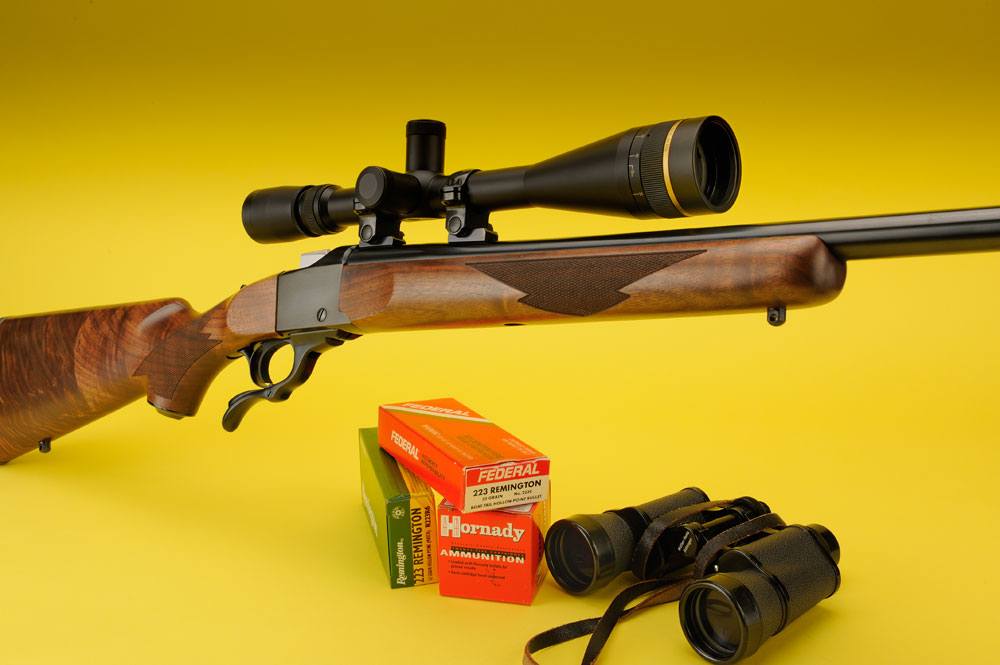 However, I firmly believe the single-shot rifle was the dearest to his heart. In his collection, he had a nice assortment of the classics — to wit, Sharps, Gibbs Farquharson, Westley-Richards — all of which gave him the idea to come up with a modern, under-lever single-shot with a price point to match that of the average hunter, now 50 years on the market. In the end, Ruger and his design team came up with a modernized Farquharson that, through its lifetime, was chambered for almost three dozen cartridges from the .218 Bee to the .458 Winchester Magnum and available in seven distinct models, not to mention special editions and the offshoot of the No. 1, which was the No. 3.
However, I firmly believe the single-shot rifle was the dearest to his heart. In his collection, he had a nice assortment of the classics — to wit, Sharps, Gibbs Farquharson, Westley-Richards — all of which gave him the idea to come up with a modern, under-lever single-shot with a price point to match that of the average hunter, now 50 years on the market. In the end, Ruger and his design team came up with a modernized Farquharson that, through its lifetime, was chambered for almost three dozen cartridges from the .218 Bee to the .458 Winchester Magnum and available in seven distinct models, not to mention special editions and the offshoot of the No. 1, which was the No. 3.
For field hunters, it’s a natural, especially for deep woods hunters. Many of us have been raised on the Winchester Model 94, and you know how that goes. Because of the thinness of the receiver, the gun is handy to carry while climbing over old blow downs, dodging bramble bushes and small saplings. The same is in the offering of the No. 1, especially if you choose a model with open sights, as the bulk of a mounted scope is absent on this type of gun.
Using the No. 1 Light Sporter for example, the barrel is a curt 22 inches; placing it on your shoulder negates any field carry, as the tip of the barrel rarely goes over the top of your cap, making walking easy. Interesting to note is that because the No. 1 is devoid of a long, bolt-type action, my Model 1-B in .204 Ruger with its 26-inch barrel is the same length (42½ inches) as my pet Savage Model 114 in .270 Winchester, which can be an advantage to long-range shooters using modern magnum ammunition. For scabbard use, the lack of a bolt handle makes insertion or retrieval of the gun too easy to mention, and with the addition of a tang safety (forward to fire, down for safe), this gun is a natural for both right- and left-handed shooters.
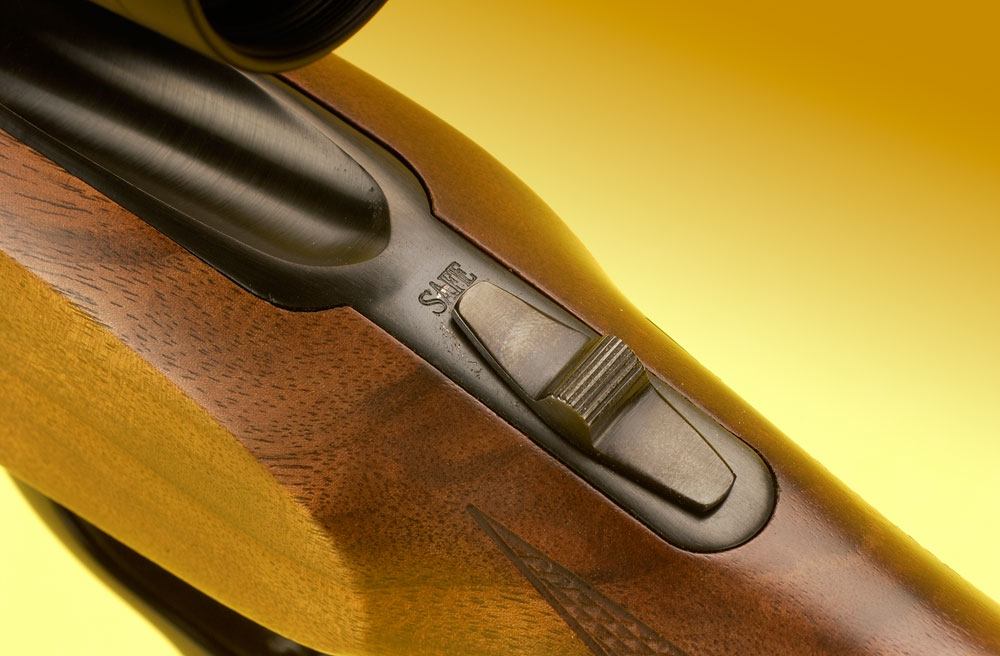 While the model variations have been cut back through a change in the distributorship of the No. 1, many are still available as special runs or on the secondary market. Presently, Lipsey’s of Baton Rouge, Louisiana, has taken over the franchise of the No. 1s, and although they list six different models of the gun, be advised, they are limited on cartridge availability, with only one specific caliber per model.
While the model variations have been cut back through a change in the distributorship of the No. 1, many are still available as special runs or on the secondary market. Presently, Lipsey’s of Baton Rouge, Louisiana, has taken over the franchise of the No. 1s, and although they list six different models of the gun, be advised, they are limited on cartridge availability, with only one specific caliber per model.
I assume this will change, as waiting for the right cartridge can be painful especially at this pace. Here, a quick check at GunBroker, Classic Sporting Arms or Cabela’s will provide a long list of guns (both new and used) for sale.
For variety, the Ruger No. 1 has something for everyone. Over the ensuing years I’ve had, purchased and traded most every model they have, but the one that is my all-time favorite is the No. 1 Standard rifle.
This is the one with the extended forearm, which is perfect for my type of varmint hunting. I started out with one in 1976 in .22-250 Remington, and it's still turning out groups around a half-inch with the Hornady 60-grain Spire Point bullet. That rifle is still in my gunroom sitting proudly on the rack.
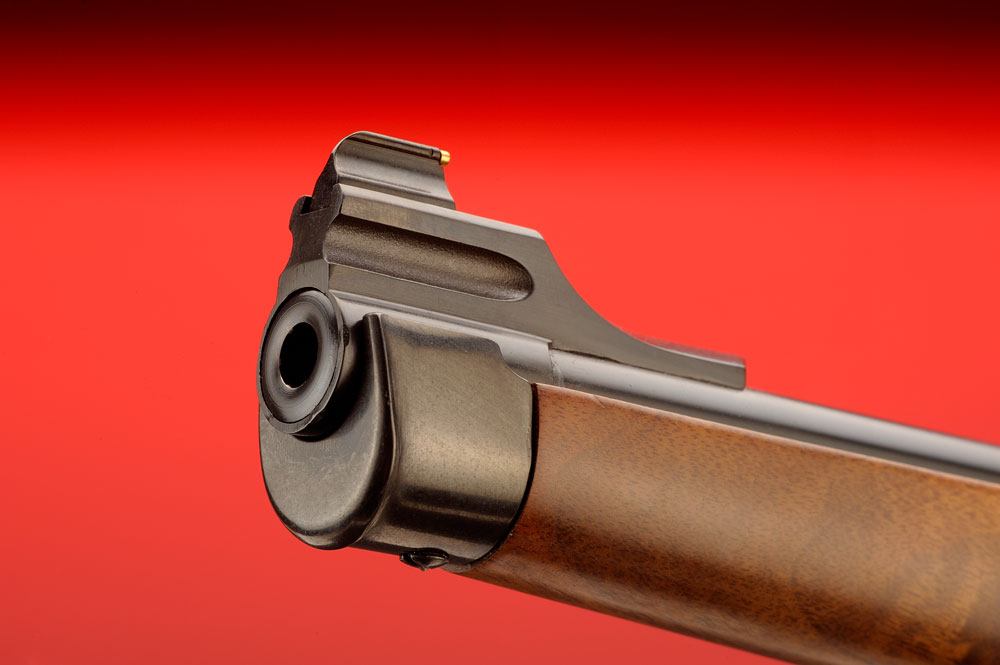 In addition to this Standard rifle with a tapered 26-inch barrel, there are a half-dozen more to add with the barrel lengths in parenthesis. The Light Sporter (22-inch), Medium Sporter (26-inch), Special Varminter (24-inch heavy), Tropical (24-inch heavy), International (20-inch lightweight) and the Standard Light Sporter complete with a handy 22-inch barrel. All Ruger No. 1s came with a set of Ruger rings that mounted on an elegant quarter rib attached to each rifle at the factory.
In addition to this Standard rifle with a tapered 26-inch barrel, there are a half-dozen more to add with the barrel lengths in parenthesis. The Light Sporter (22-inch), Medium Sporter (26-inch), Special Varminter (24-inch heavy), Tropical (24-inch heavy), International (20-inch lightweight) and the Standard Light Sporter complete with a handy 22-inch barrel. All Ruger No. 1s came with a set of Ruger rings that mounted on an elegant quarter rib attached to each rifle at the factory.
For the purpose of wringing out the details, let’s stay with the Ruger No. 1 Standard rifle.
When detailing the stock, it is easy to see Bill Ruger had his two cents of involvement, as the stock is classic in every way. There is no line-disturbing comb, nor is there a cheekpiece on the left side of the buttstock.
This is what makes the No. 1 so popular with both right- and left-handed shooters. With the tang-mounted safety and no bolt to mar the operation, this is truly an ambidextrous rifle for all to enjoy.
Regardless of the model, the buttstock is finished off with a handsome and classic rubber recoil pad with a black spacer. The pistol grip has a pleasant sweep to it, and I find it comfortable whether braced on an old log or lying prone on the ground. A Ruger grip cap and a rear sling stud finishes this part of the gun off in grand style. Length of pull is 13½ inches.
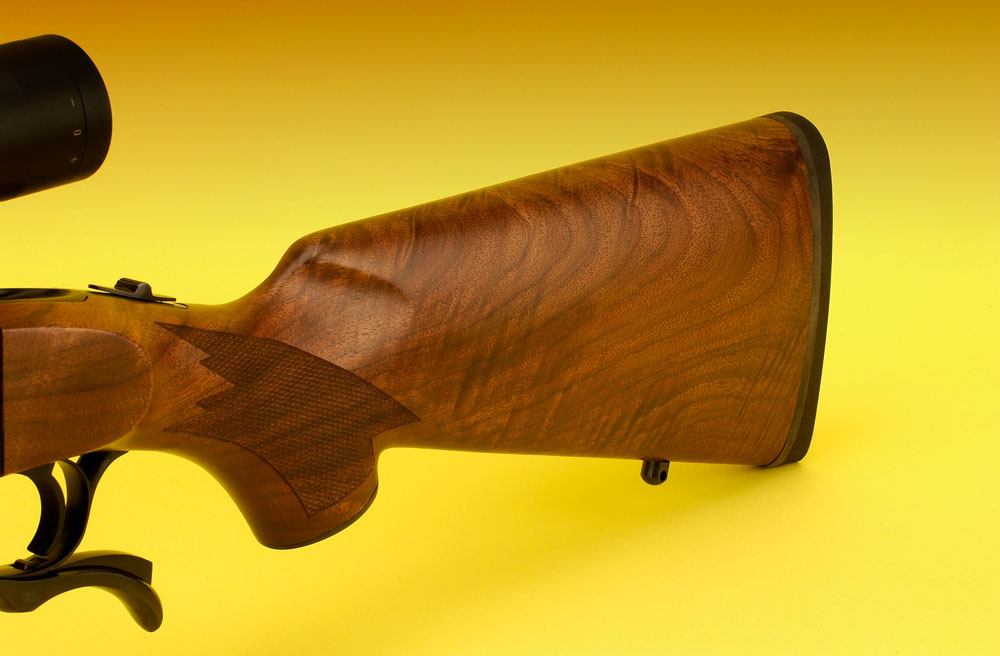 With my Standard, the front part of the stock is considered to be a semi-beavertail in design and measures over a foot long from the receiver to the muzzle end of the stock. It is held to the gun via a hanger and an angled screw that, when tightened down, actually pulls the wood up and towards the front of the receiver for support and to enhance accuracy.
With my Standard, the front part of the stock is considered to be a semi-beavertail in design and measures over a foot long from the receiver to the muzzle end of the stock. It is held to the gun via a hanger and an angled screw that, when tightened down, actually pulls the wood up and towards the front of the receiver for support and to enhance accuracy.
On my guns and samples received recently, the final finish is done in a satin patina, smooth to the touch, and covers the stock with a feeling the old masters laid down on classic guns at the turn of the century. There is more than ample checkering on the No. 1, and it covers both the pistol grip and forend of the gun.
On the former, recently, a new pattern of sorts has appeared that offers rear extension of the point pattern now standard on all No. 1s. On the latter, the point pattern continues, less subdued, nevertheless with good coverage for holding the gun.
All of the inletting is first class, with the area around the tang, trigger guard and barrel channel cut with precision. With reference to the receiver, the wood to metal fit is finished “proud,” which simply means it is not finished flush with the receiver itself. While some may object to this, this method keeps the receiver pristine, as the final finishing process will not scratch this highly polished surface, making the gun more economical to build with a lower price point.
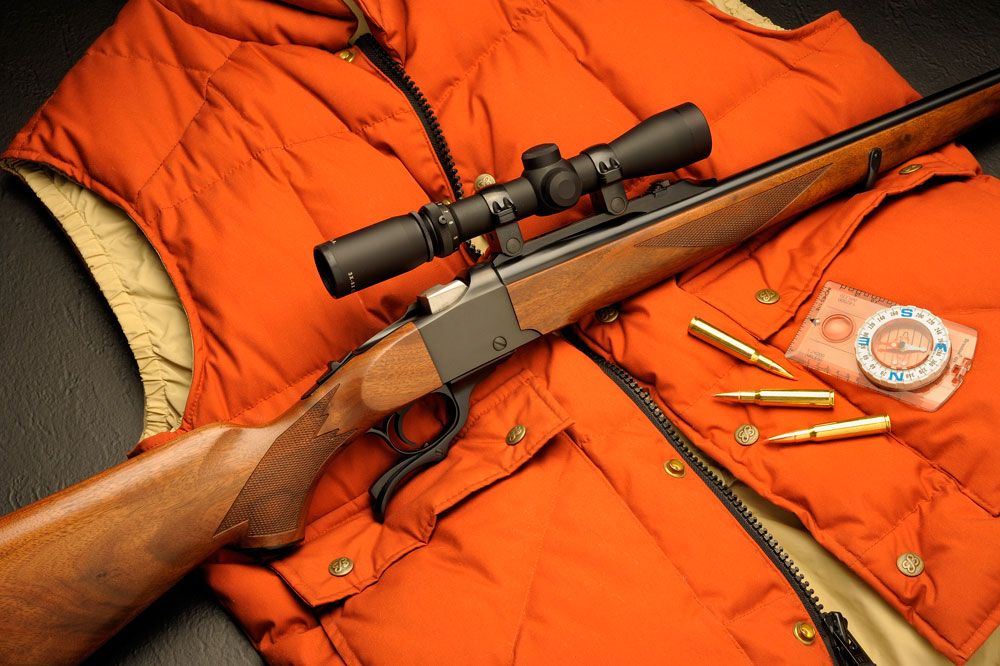 Looking back, I can remember that the Ruger No. 1 was a premium rifle and, with this, deserved semi-fancy to fancy wood. In the beginning years, most if not all had better than select wood; in fact, I can remember wood that was outright gorgeous.
Looking back, I can remember that the Ruger No. 1 was a premium rifle and, with this, deserved semi-fancy to fancy wood. In the beginning years, most if not all had better than select wood; in fact, I can remember wood that was outright gorgeous.
It seems over the years pricing has gone up, but the quality of the wood has gone down. Occasionally, there is a rifle with a strong grain structure, but on the whole, there is nothing of the caliber of the guns long ago. In any event, if you have the time to scout around, there are handsome stocks to be found.
The receiver, barrel and related parts are finished to a rich, blue patina in keeping with the origin of this particular gun. The investment cast action takes its look from the Farquharson rifles of the past, but it is redesigned and modified for the modern shooter.
Compared to traditional bolt-action rifles, the basic receiver is only 2½ inches long but actually measures about 5½ inches long if you include the area out to the rear of the tang housing the safety and related internal parts. As mentioned before, the width of the receiver comes to 1½ inches — perfect for those who like to hand carry their weapon into the woods.
 Bill Ruger and his design team had many thoughts on how to make the gun function perfectly every time while keeping it trim right down to the muzzle. They did this by moving the mainspring forward and within the protection of the forearm. From a design standpoint, the gun is considered hammerless and upon cocking the gun with the operating lever, the falling block drops down, coming to rest within the confines of the receiver. In fact, one interesting feature of this rifle is that when the gun is cocked, the very tip of the hammer shows as a cocking indicator at the forward part of the operating lever.
Bill Ruger and his design team had many thoughts on how to make the gun function perfectly every time while keeping it trim right down to the muzzle. They did this by moving the mainspring forward and within the protection of the forearm. From a design standpoint, the gun is considered hammerless and upon cocking the gun with the operating lever, the falling block drops down, coming to rest within the confines of the receiver. In fact, one interesting feature of this rifle is that when the gun is cocked, the very tip of the hammer shows as a cocking indicator at the forward part of the operating lever.
In keeping with the overall smoothness of operation, the breechblock moves up and down within the receiver at a preset 3 degrees to the rear as to allow it to move effortlessly over the rear of the cartridge case when installed into the chamber. When the lever is up, a lever latch locks the action in place. Pressing down on this lever unlocks this forward facing latch, dropping the block while resetting the action and ejecting the spent cartridge.
Ejection of the spent round is always reliable thanks to a massive ejector spring located within the forearm of the gun. Tied to a cam, this spring provides more than enough force to move any cartridge out of the gun.
For those of us who like to keep our brass for reloading, there is an adjustment within this assembly to keep the brass within the confines of the gun and not on the ground. In short, this allows the shooter to vary the pressure on this ejector as to limit the travel of the spent case out of the gun.
 Years back, you could adjust the trigger to one’s preferences, but today that luxury is gone. While there are still the dual adjustment screws within the confines of the trigger assembly, going through the book shows that Ruger does not want you to “tinker” with the mechanism. To wit, Ruger goes on to say, “do not alter any factory setting,” which simply means it has been adjusted at the factory.
Years back, you could adjust the trigger to one’s preferences, but today that luxury is gone. While there are still the dual adjustment screws within the confines of the trigger assembly, going through the book shows that Ruger does not want you to “tinker” with the mechanism. To wit, Ruger goes on to say, “do not alter any factory setting,” which simply means it has been adjusted at the factory.
On the majority of my No. 1s in the rack, I am looking at an average of 4 pounds of pull with no take-up before the sear broke. Not ideal, but workable, and if I had just one criticism of the gun, it would be the adjustable (or the lack of) trigger.
On my Standard gun, the barrel is 26 inches — perfect for my affinity to vintage wildcat cartridges. It has a graceful taper out to the muzzle to a sporting diameter of .625 inches. Attached to the barrel is a quarter rib, perfect for mounting a scope, or factory installed iron sights.
With regards to a scope and eye relief, I offer this suggestion, especially with the higher-powered optics. If you have trouble getting a full image circle with your scope, purchase a set of Ruger dual rear offset rings. For some reason, I have trouble with all No. 1 guns, as I can’t seem to get close enough to the scope, and with these (available from the Service Department), they solve the problem with aplomb. On the other hand, some models have an adjustable folding-leaf sight mounted on the quarter rib, with a ramp front sight complete with a gold bead.
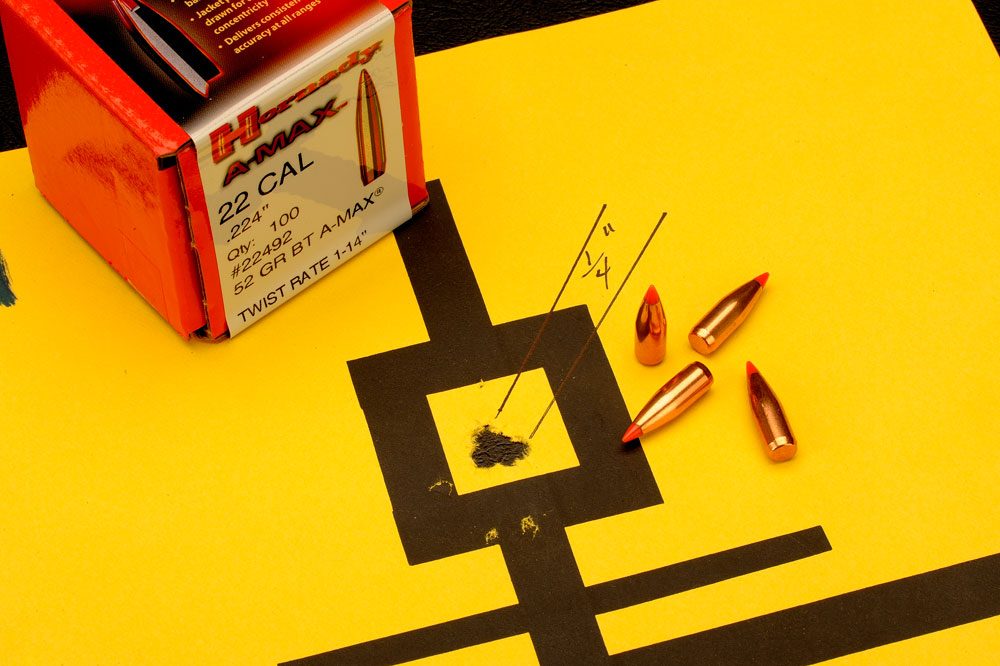 When it comes to accuracy with the No. 1, reams of paper have been written about this subject. For me, I have no problems, and since I handload, I can coax groups out of my guns that go under an inch or better. Equally impressive are modern factory loads in the .204 Ruger from Hornady or Remington that have placed three shots on paper at the century mark of .680 inches and .360 inches respectively.
When it comes to accuracy with the No. 1, reams of paper have been written about this subject. For me, I have no problems, and since I handload, I can coax groups out of my guns that go under an inch or better. Equally impressive are modern factory loads in the .204 Ruger from Hornady or Remington that have placed three shots on paper at the century mark of .680 inches and .360 inches respectively.
The Ruger No. 1 offers a great deal of fun to any hunter, be it small game, big game or varmint. I have used these guns for my varmint hunting and cartridge experiments (my favorite is the .219 Donaldson Wasp) for the past 40 years, and they still continue to amaze me. For more information, contact www.lipseys.com or www.ruger.com.
Editor's Note: This article is an excerpt from the April 2016 issue of Gun Digest the Magazine.

Next Step: Get your FREE Printable Target Pack
Enhance your shooting precision with our 62 MOA Targets, perfect for rifles and handguns. Crafted in collaboration with Storm Tactical for accuracy and versatility.
Subscribe to the Gun Digest email newsletter and get your downloadable target pack sent straight to your inbox. Stay updated with the latest firearms info in the industry.

![Best Concealed Carry Guns In 2025 [Field Tested] Wilson Combat EDC X9S 1](https://gundigest.com/wp-content/uploads/Wilson-Combat-EDC-X9S-1-324x160.jpg)


![Best 9mm Carbine: Affordable PCCs [Tested] Ruger Carbine Shooting](https://gundigest.com/wp-content/uploads/Ruger-Carbine-Shooting-100x70.jpg)
![Best AR-15: Top Options Available Today [Field Tested] Harrington and Richardson PSA XM177E2 feature](https://gundigest.com/wp-content/uploads/Harrington-and-Richardson-PSA-XM177E2-feature-100x70.jpg)
